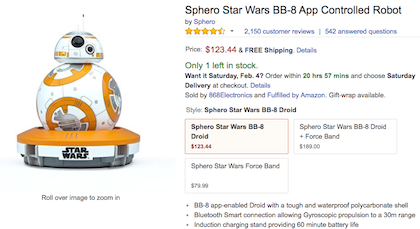So youve started or are planning to start your own ecommerce store. Congratulations! Opening up a shop can be time consuming, challenging and rewarding. Just about anyone can start their own ecommerce store these days. According to Statista, E-commerce statistics confirm the explosive pace at which this industry has developed as worldwide B2C e-commerce sales amounted to more than 1.2 trillion US dollars in 2013.
Even though anyone can start an online store using easy-to-use tools like these, it doesnt mean that they are all going to be successful! Running a successful store requires a lot of work to stand out from the crowd. In addition, it takes a product or service that customers havent seen before. Lucky for you, many business owners have worked hard to learn the ropes and earn an income from these stores, and so can you!
One of the trickier parts of growing and scaling an online business is deciding the best way to handle your fulfillment needs. This includes how you will manage your inventory, package, and ship orders from your ecommerce store. Here are some tips to help you make the process as smooth as possible.
1. Use packaging to set yourself apart
Of course, it’s important to ship orders quickly and make sure that they are well-packaged, so they dont arrive damaged. Once you get that down, going the extra mile can be a great way to set yourself apart from your competitors and create a special experience for your customers.
I recently bought some jewelry from a shop called Moonlit Creatures.
Instead of coming in a plain bubble mailer, the shop owner ships her items in pretty, shiny purple ones. Very cute, and easily recognized next to all of my other mail! Finding small ways to catch your customers attention and making buying from your store seem like a special occasion will help build your reputation and get you repeat customers.
2. Estimate and compare shipping costs
One big mistake that a lot of new shop owners make is sticking to one postal service for all of their needs. Knowing what options you have and using them to your advantage can do you a lot of good, especially in the early stages when you dont want to spend more on shipping than you need to.
To save some money, you can consider opening a business account with the postal service you use most. Another way to save is to compare prices of different services all at once and choosing the best option. To do this, you can use services like ShipGooder, which compares quotes from USPS, CanPar, TNT, Canada Post, FedEx and UPS.
3. Fulfillment warehouses
If your products are too large to store at home or your show is growing fast. Sometimes fulfillment warehouses (like Shipwire or Fulfillrite) can be one of the best ways to outsource fulfillment. This way, the fulfillment center takes care of your inventory and ships orders for you, leaving you with more time to deal with other important aspects of the business, like marketing and customer service.
Believe it or not, we got Fulfillrite to agree to answer any of your shipping and fulfillment questions free of charge. You just have to ask your question in this section of the forum and they’ll answer it! One question was just asked as I was typing this sentence.
4. Carefully manage and organize your inventory
Your inventory is basically the lifeblood of your business, and should be treated as such. Disorganized, lost, or damaged inventory can cost you in the long run. This can be avoided by finding a system that works for you and sticking to it. This can mean defining your workspace at home and keeping it organized so you know what you have and when your stock is running low.
To help keep track of your inventory, you can also use tools like the app Sortly to take pictures and log items.
5. Get into a routine
Handling fulfillment yourself can save you money when you are starting out, but you dont want to spend more time on it than you need to. To stay productive and avoid having fulfillment overshadow the rest of your tasks, get into a routine. Get all of your fulfillment needs dealt with at the same time each day or same days each week. Stick to that routine to make fulfillment an automatic, hassle-free process.
As you go through this routine, create a document which explains step-by-step how to go about fulfilling an order from the beginning to the end. Make this document as detailed as possible. Eventually, if you ever want an employee to take over this job, you can have them reference the document to understand how to proceed with shipping and fulfillment.
6. Dealing with customs
Many new shops only sell domestically or within their own countries. Dealing with customs and international orders may seem daunting at first, but there are some standard ways that owners can simplify the process.
First, you can use shipping calculators to estimate costs for international orders, which tend to be the same with the exception of a few countries. Second, to avoid any confusion or unwanted costs, most shops include a policy that clearly states that customers are responsible for handling any duties or costs associated with customs.
7. Continuously find ways to make the process more efficient
It’s not sexy, but a large part of business is setting up systems that will operate without you there and keep the business churning out products and bringing in new sales. Eventually, having these systems can give you the flexibility to sell the business or spend your time as you’d like.
Always be open to suggestions and ways that you can improve your processes. Asking a friend for help, prepackaging items if possible, and printing shipping labels at home are some ways that you can streamline your fulfillment tasks in the early stages. As you progress, don’t be afraid to ask key employees how they think the processes could be improved.
8. Make use of tools that are available to you
In this post Ive mentioned some free and paid tools to help you with things like inventory management, warehousing, and shipping. It will be up to you to choose whether or not you are ready to use some of these tools, but keep in mind that they can have a huge impact on how you do business.
Ultimately, it has a lot to do with how big you want your shop to get and whether you want to outsource some of the more time consuming tasks. Other tools include:
- CreateJoy allows you to create your own subscription business.
- These are the ecommerce platforms we recommend.
- Celery is a platform to accept pre-orders.
- Trello and Asana are great project management tools.
9. Create an experience to stay competitive
I mentioned using fancy packaging as a way to stand out earlier in this post. Just remember that any way you can stay creative and create a memorable experience for your customers is a way to build your reputation as a great online store. Shops that interact with fans and customers on social media, offer discounts for repeat buyers, or giveaways, have the edge over stores that dont take advantage of some of these newer strategies.
By adding a bit of personality to your communications, messaging, and brand, you’ll stand out from all of the online stores that are looking to get in on the ecommerce gold rush.
Conclusion
I hope that this post has inspired you to consider some of the ways you can make the order fulfillment process easier on yourself and more effective. By making some small changes in the way you ship orders you can save time, money, and give your customers the best possible experience.
Getting a customer to buy from your store is one thing, but for them to be happy with the end result once they get your order in the mail is another. And those happy customers are the ones you are relying on to review your products and spread the word about your business.








